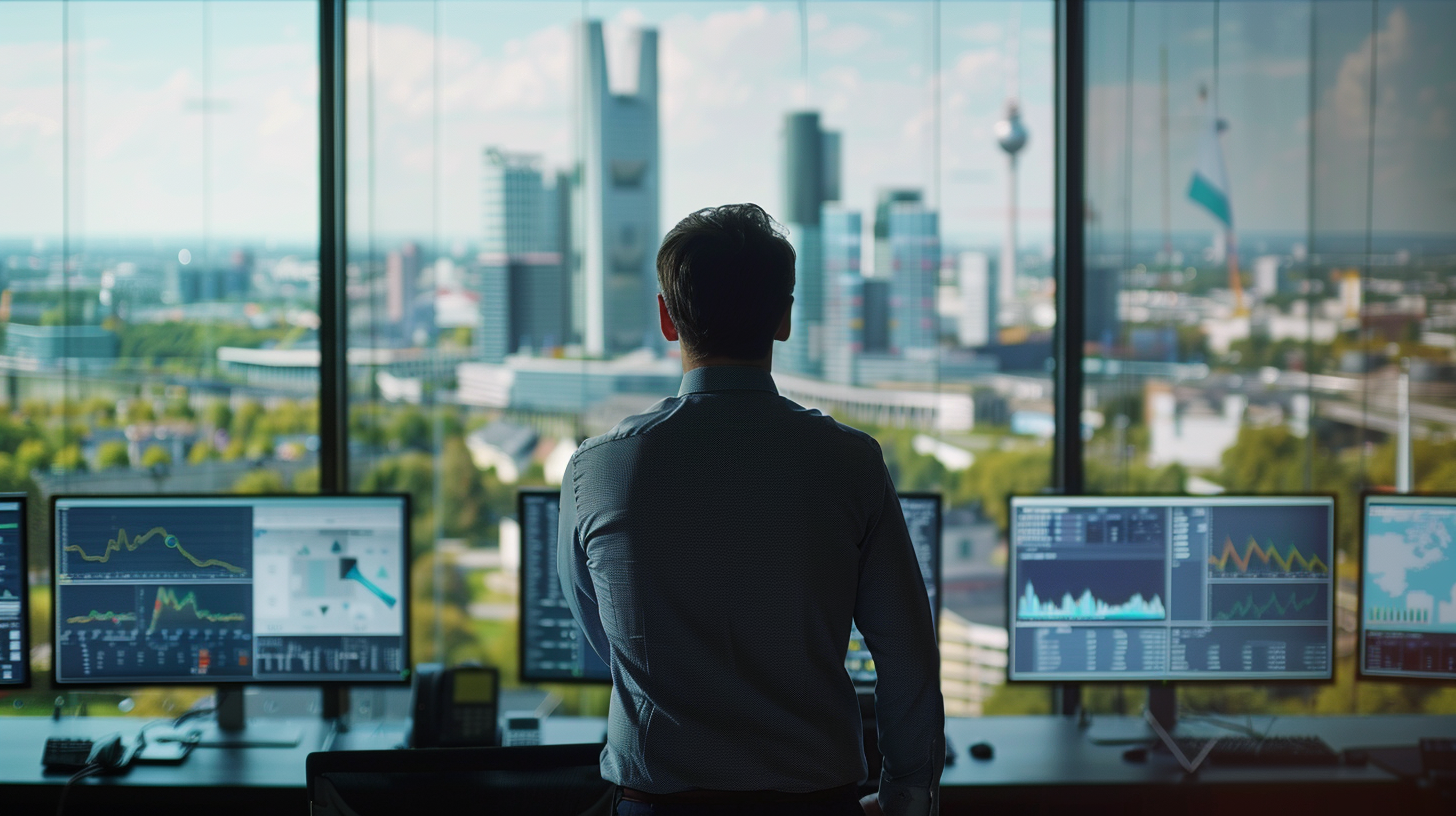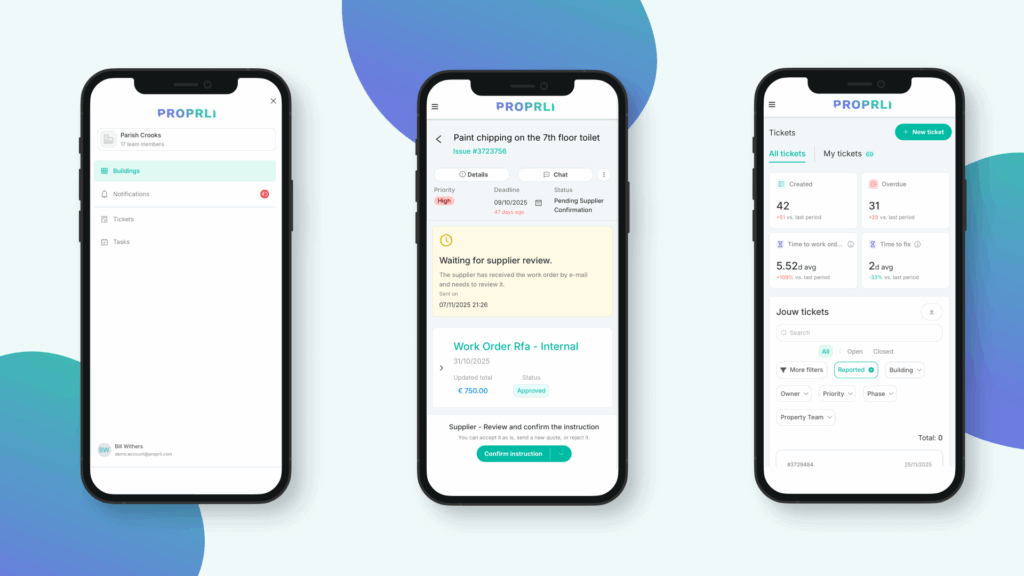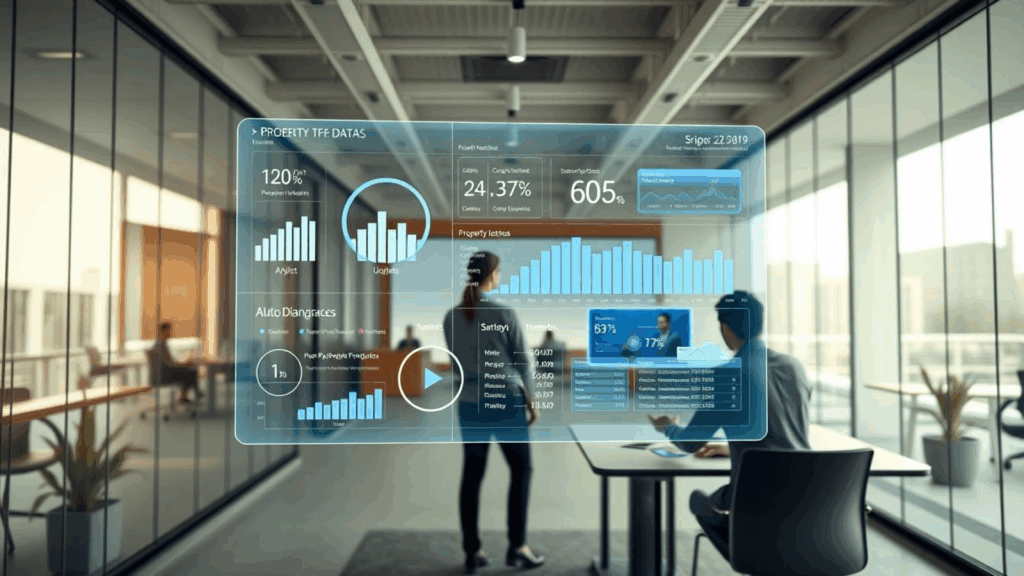Managing properties, whether residential or commercial, is a daunting task for real estate managers. They must track assets, schedule preventive maintenance, and streamline operations. Fortunately, various property maintenance software programs and facility management systems exist to simplify these tasks. They help in efficient property management.
These software solutions vary from cloud-based platforms to locally installed applications. They cater to the unique needs of different property types and their functions. When choosing the best software for your organization, consider its core focus, compatibility with your technology infrastructure, and its ability to automate tasks. Look for features like asset tracking tools and preventive maintenance scheduling to drive business growth.
By using the right property maintenance software, technical property managers can streamline their operations. They can also enhance tenant experiences and optimize asset lifecycle management. This article will delve into the key features and benefits of these essential tools. It will also cover best practices for implementing and adopting new software in your real estate management processes.
Key Takeaways
- Property maintenance software programs are crucial for efficient technical real estate management
- These tools offer features such as asset tracking, preventive maintenance scheduling, and building operations optimization
- Cloud-based solutions provide real-time property management capabilities
- Integrating property maintenance software with existing systems is essential for seamless adoption
- Choosing the right software and following best practices for implementation are key to success
Understanding the Core Features of Property Maintenance Software
Property maintenance software offers a wide range of features to simplify managing residential and commercial properties. It’s essential to grasp its core functionalities. These include tenant management, lease tracking, finance management, real estate accounting, and property financial reporting.
At the core of any effective property maintenance software are the tenant management and lease tracking modules. These tools automate lease administration and track occupancy and rent payments. They help property managers manage tenant tasks efficiently, ensuring a well-organized workflow.
Finance management is another key feature of property maintenance software. It includes integrated accounting modules for real estate accounting, expense tracking, and financial reporting. These tools help property managers monitor and control expenses and income, ensuring financial stability and profitability.
| Core Feature | Benefits |
|---|---|
| Tenant Management | Streamlines tenant communication, lease administration, and rent collection |
| Lease Tracking | Monitors occupancy status, lease renewals, and rent adjustments |
| Finance Management | Handles property-related expenses, income, and budgeting |
| Real Estate Accounting | Facilitates accurate bookkeeping and financial reporting |
| Property Financial Reporting | Generates comprehensive reports for informed decision-making |
Property maintenance software also includes analytics and operational reporting tools. These are crucial for making informed decisions and strategic planning. They allow property managers to:
- Compare expenses and income
- Assess property profitability
- Monitor key performance indicators (KPIs)
- Identify areas for improvement and cost optimization
By utilizing the core features of property maintenance software, property managers can streamline their operations. They can enhance efficiency and make data-driven decisions to optimize their real estate portfolios.
Cloud-Based Solutions for Real-Time Property Management
The real estate industry has seen a significant shift with the advent of cloud-based property management software. This innovation has given property managers access to real-time management tools and remote access. It has revolutionized how they operate, making their work more efficient and effective. This, in turn, has led to better experiences for tenants.
One of the major benefits of cloud-based software is its ability to offer seamless remote access. Property managers can now manage their properties from anywhere, at any time. This flexibility allows them to quickly respond to tenant needs, address maintenance issues, and make timely decisions.
Real-time management tools are another significant advantage of cloud-based software. These tools provide live updates, instant notifications, and real-time reporting. This enables property managers to monitor their properties’ performance closely. They can track occupancy, maintenance requests, and financial data in real-time. This helps them optimize their operations and increase profitability.
Cloud-based software also simplifies online payment processing for tenants. Tenants can now pay their rent online securely, without the hassle of physical checks or office visits. This not only enhances the tenant experience but also streamlines the accounting process for property managers. It reduces the risk of errors and ensures timely rent collection.
| Feature | Traditional Property Management | Cloud-Based Property Management |
|---|---|---|
| Accessibility | Limited to office hours and physical location | 24/7 remote access from anywhere |
| Real-Time Updates | Delayed and manual updates | Instant updates and notifications |
| Collaboration | Siloed and disconnected teams | Seamless collaboration and communication |
| Payment Processing | Manual and time-consuming | Automated and online payment options |
The shift to cloud-based property management software brings numerous benefits for both property managers and tenants. It streamlines operations, enhances efficiency, and delivers superior service. As the real estate industry continues to evolve, cloud-based software is becoming essential for success.
Streamlining Maintenance Operations with Automated Tools
In the fast-paced world of property management, efficiency is key. It ensures tenant satisfaction and maximizes profitability. Automated maintenance management revolutionizes routine tasks and emergency repairs. It leverages cutting-edge software, streamlining operations and keeping managers ahead.
Automated maintenance management allows for scheduling tasks with just a few clicks. Advanced software creates detailed schedules, assigns tasks, and tracks progress in real-time. This automation saves time, reduces errors, and ensures no critical tasks are missed.
Effective vendor management is crucial for streamlined maintenance. Integrating vendor tools with maintenance software simplifies communication and tracks performance. This integration eliminates manual data entry, reducing miscommunications and leading to faster, higher-quality work.
Repair tracking applications are a game-changer in property maintenance. They enable tenants to submit requests directly, which are then routed to the right team or vendor. Managers can monitor requests, communicate with tenants, and ensure timely repairs. This transparency boosts tenant satisfaction and helps identify and address recurring issues more effectively.
| Feature | Benefit |
|---|---|
| Automated Maintenance Scheduling | Ensures timely completion of routine tasks and reduces the risk of overlooking critical maintenance needs |
| Vendor Management Integration | Streamlines communication with contractors, tracks performance, and simplifies invoice processing |
| Repair Tracking Applications | Allows tenants to submit requests easily, improves transparency, and enables faster response times |
Embracing automated maintenance management and related tools elevates property management operations. These tools save time, reduce costs, and enhance the tenant experience. They lead to increased retention rates and a healthier bottom line.
Enhancing Tenant Experience through Self-Service Portals
In today’s fast-paced world, offering tenants easy and efficient self-service options is crucial. By integrating robust tenant self-service features into renter online portals, property managers can boost tenant satisfaction and streamline their work. These portals enable tenants to manage their living experience, from submitting maintenance requests to making rent payments and communicating with property managers.
One major advantage of tenant self-service portals is their ability to handle maintenance requests efficiently. Tenants can report issues, upload photos, and track their requests’ progress online. This saves time for both tenants and property managers, ensuring maintenance issues are resolved quickly. It also reduces potential damages and tenant frustration.
Online rent payments are another key feature of tenant self-service portals. By integrating secure payment gateways, tenants can pay rent with a few clicks, eliminating the need for checks or in-person transactions. This simplifies the process for tenants and reduces administrative work for property managers, allowing them to focus on other important tasks.
Effective communication is essential for a positive tenant-landlord relationship. Tenant self-service portals offer a central platform for communication, enabling tenants to contact property managers, submit inquiries, and receive timely responses. This open communication fosters trust and transparency, leading to higher tenant satisfaction and retention rates.
| Feature | Benefit |
|---|---|
| Online maintenance requests | Prompt issue reporting and tracking |
| Secure rent payments | Convenient and hassle-free transactions |
| Centralized communication | Enhanced tenant-landlord relationship |
By utilizing tenant self-service features and renter online portals, property managers can enhance the living experience for their tenants. These tools empower tenants and streamline property management processes. This leads to increased efficiency, reduced costs, and improved overall asset performance.
Optimizing Asset Tracking and Lifecycle Management
Effective property maintenance heavily relies on tracking assets and managing their lifecycles efficiently. Asset tracking tools and equipment lifecycle tracking solutions are key components of modern property maintenance software. These tools help property managers keep accurate inventory records, monitor asset conditions, and make informed decisions about repairs and replacements.
Inventory control applications are crucial for asset management in property maintenance. They allow managers to track spare parts, tools, and supplies needed for maintenance. By maintaining accurate inventory records, managers can ensure necessary items are available when needed. This reduces downtime and improves maintenance efficiency.
Computerized maintenance management systems (CMMS) elevate asset tracking and lifecycle management. These systems offer a centralized platform for managing property maintenance, including asset tracking, work order management, and preventive maintenance scheduling. CMMS solutions often include features such as:
- Asset hierarchies and detailed asset profiles
- Warranty tracking and management
- Predictive maintenance capabilities based on asset performance data
- Integration with mobile devices for field technicians
| Feature | Benefit |
|---|---|
| Asset Hierarchies | Organize assets by location, system, or other criteria for easier management |
| Warranty Tracking | Ensure that warranties are leveraged effectively to reduce repair and replacement costs |
| Predictive Maintenance | Identify potential issues before they lead to failures, minimizing downtime and extending asset life |
| Mobile Integration | Empower field technicians with real-time access to asset information and work orders |
By leveraging advanced asset tracking and lifecycle management capabilities, property managers can optimize asset performance and longevity. This reduces maintenance costs and improves operational efficiency. Investing in robust property maintenance software with strong asset management features is crucial for success in today’s competitive real estate market.
Integrating Property Maintenance Software with Existing Systems
Choosing the right property maintenance software is crucial. It must integrate smoothly with your current technology setup. This ensures a seamless transition, keeping your operations running smoothly.
Seamless accounting integration is a key feature to look for. The software should easily connect with your accounting system. This means automatic updates of financial data, like invoices and payments. It saves time and reduces errors.
Integration also unlocks the full potential of your technology. By linking systems like vendor management and asset tracking, you can streamline your workflow. This boosts overall efficiency.
Another advantage is the ability to create detailed financial reports. By combining data from various sources, you get a clear picture of your portfolio’s financial health. These reports are essential for making informed decisions and improving operations.
| Integration Type | Benefits |
|---|---|
| Accounting Integration |
|
| Vendor Management Integration |
|
| Tenant Portal Integration |
|
Lastly, mobile accessibility is vital. With mobile access, staff can manage tasks anywhere. This ensures quick responses to issues, no matter where they are.
By focusing on integration, property maintenance software can enhance your operations. It improves financial management and tenant service. Embrace integration to maximize your real estate portfolio’s potential.
Choosing the Right Property Maintenance Software Programs
When picking property maintenance software, focus on a user-friendly interface and easy access. A well-designed interface makes adoption smooth and reduces training needs for both management and tenants. It allows tenants to easily submit maintenance requests, manage rent, and communicate with managers, enhancing the user experience.
Responsive design is also crucial. The software should work well on various devices, ensuring users can access it easily from desktops, laptops, tablets, and smartphones. Clear navigation menus and buttons make it simple for users to find what they need.
Customizable features are vital, as they let the platform meet specific user needs. Look for software with:
- Customizable dashboards
- Configurable workflows
- Adaptable reporting capabilities
- Personalized user roles and permissions
Effective communication is key in property management. Choose software with functional communication tools, such as:
- In-app messaging
- Email integration
- SMS notifications
- Real-time updates and alerts
These tools help in quick communication between managers, tenants, and maintenance teams. They ensure issues are resolved promptly and relationships are strengthened.
| Key Considerations | Benefits |
|---|---|
| User-Friendly Interface | Streamlines adoption and minimizes training needs |
| Responsive Design | Provides optimal viewing experience across devices |
| Customizable Features | Allows tailoring to specific user needs |
| Functional Communication Tools | Enables quick correspondence and timely issue resolution |
By focusing on these key factors, property managers can find software that boosts efficiency, tenant satisfaction, and overall property management.
Best Practices for Implementing and Adopting New Software
Introducing new property maintenance software can be intricate. Yet, adhering to best practices ensures a seamless transition and successful adoption. A detailed implementation plan is essential, outlining steps, timeline, and necessary resources. Close collaboration with the software provider’s support team is crucial to address any implementation hurdles and ensure proper setup.
Customization is vital for a software’s success. Tailoring the software to meet the unique needs of your property management business is key. This might involve setting up specific configurations, creating custom fields, and designing workflows that mirror your company’s operations. The support team’s assistance in these customizations is invaluable for unlocking the software’s full potential.
Integration with existing systems is another critical factor. The software should integrate smoothly with platforms like accounting and vendor management systems. This integration avoids redundant efforts and streamlines processes. A thorough analysis of current systems and a detailed integration plan are necessary during the implementation phase.
User training is indispensable for successful software adoption. Comprehensive training ensures that all stakeholders, including property managers, maintenance staff, and tenants, can utilize the software effectively. Training should encompass essential areas such as navigation, work order management, preventive maintenance, inventory, and reporting.
- Navigation and user interface
- Work order creation and management
- Preventive maintenance scheduling
- Inventory management
- Reporting and analytics
| Implementation Phase | Key Considerations |
|---|---|
| Planning | Outline steps, timeline, and resources required |
| Customization | Configure settings, create custom fields, and design workflows |
| Integration | Analyze existing systems and plan for integration |
| User Training | Provide comprehensive training on navigation, work orders, preventive maintenance, inventory, and reporting |
By adhering to these best practices, property management companies can ensure a smooth transition and maximize the benefits of their investment. A well-planned implementation process, coupled with customization, integration, and thorough user training, lays the groundwork for enhanced efficiency, improved tenant satisfaction, and superior property management.
Conclusion
In today’s fast-paced real estate industry, property maintenance software programs are crucial for technical property managers. They help streamline real estate management, boost efficiency, and reduce costs. These innovative solutions offer top features and benefits, making it easier to manage and maintain real estate portfolios.
Cloud-based platforms enable real-time collaboration and data access. Automated maintenance management systems and self-service tenant portals are also available. These tools are designed to optimize operations and enhance tenant satisfaction. Property managers should evaluate user-friendliness, customization options, and integration capabilities when choosing software.
For a successful implementation, property management businesses must follow best practices. This includes providing thorough user training and fostering a culture of continuous improvement. By embracing these tools, technical property managers can lead the industry. They deliver exceptional service to clients and tenants, driving growth and profitability in the long term.
FAQ
What are the core features of property maintenance software programs?
Property maintenance software programs have key features like tracking tenants and leases, managing finances, and accounting for real estate. They also offer financial and operational reporting, and analytics. These features streamline management processes, making operations more efficient.
How do cloud-based property management solutions benefit property managers?
Cloud-based solutions provide real-time access to management tools, enabling remote work and better communication. They offer scalability and enhanced data security. Additionally, they support online payments and improve communication with tenants.
What role does automated maintenance management play in property management?
Automated maintenance management optimizes workflow and boosts tenant satisfaction. It uses advanced software for scheduling and tracking repairs. This allows for automated task assignment, real-time updates, and integration with management platforms.
How can property management software enhance the tenant experience?
Software offers user-friendly online portals with self-service features. These portals let tenants manage maintenance requests, rent payments, and communication with managers. This independence improves the tenant experience.
What should property managers consider when choosing property maintenance software?
Property managers should look at compatibility with current technology, accounting integration, and user-friendliness. They should also consider ease of access, customization options, and responsive design for all devices.
How can property managers ensure a smooth transition when implementing new software?
A clear implementation plan and close collaboration with the software provider’s support team are crucial. Customizing the software, integrating with existing systems, and providing comprehensive training are also key steps.
What are the benefits of integrating property maintenance software with existing systems?
Integration with accounting and vendor management platforms streamlines processes and avoids duplication. It maintains continuity with financial data and processes. This integration offers comprehensive financial reports and insights into property portfolio health.
How can asset tracking tools and equipment lifecycle tracking benefit property managers?
Asset tracking tools and equipment lifecycle tracking provide real-time data on asset location, condition, and maintenance history. They enable proactive maintenance, reduce downtime, and improve inventory control and budgeting.






